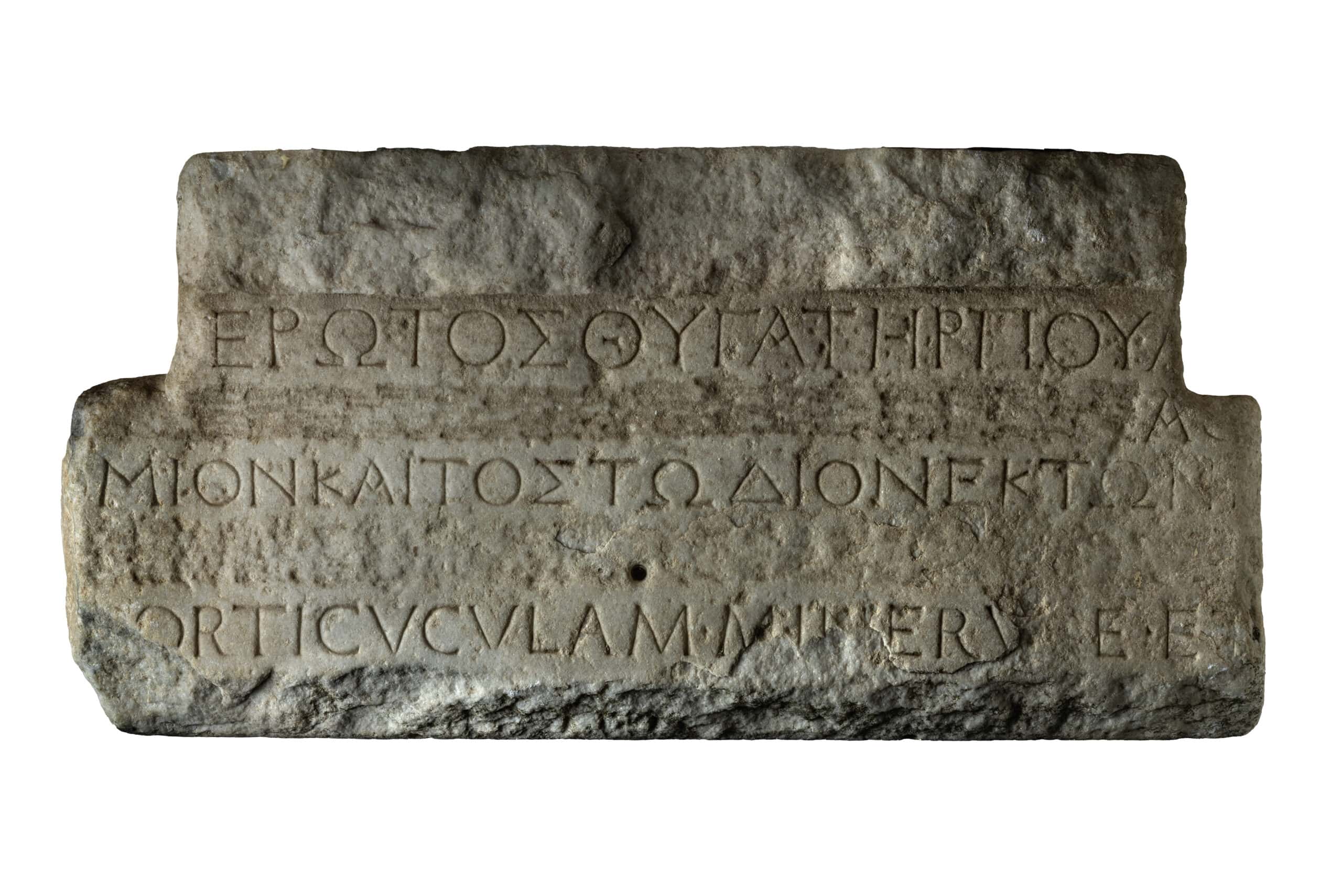Marble architectural member containing a bilingual votive inscription regarding the construction/repair of buildings on Melos by Magia Pulchra

An inscription of the mid-1st century AD engraved in marble publicly documents the provisions made by a Roman woman for the construction/repair of buildings on the island of Melos. The text is bilingual, inscribed in Greek and Latin, as a reminder of her birthplace. Her name is, according to the inscription, Magia Pulchra, the daughter of Lucius Magius Eros.
The text suggests that the stone block on which the inscription was engraved comes from a small portico (porticucula) and possibly the decorated space around an altar, monuments dedicated by Magia Pulchra to the goddess Athena/Minerva and one more deity in order to weave strong ties with her small new homeland. Another inscription also on Melos features the name Lucius Magius Eros, who commissioned a number of buildings on the same island. It appears that the father and his daughter, people who were not born on Melos, coming from a group of freed Romans that gradually swarmed into regions of the Eastern Mediterranean during the 1st century AD wished to make a contribution to the small Cycladic island.
As a daughter of a distinguished family of entrepreneurs, possibly associated with the exploitation of the Melian mineral lands, Magia Pulchra became a Cycladic woman and built an imposing public place of worship, offering her services to the Melian society. A dynamic woman, who in the middle of the century did not hesitate to obtain a loan that amounted to 30,000 sestertii from the Sulpicii, a family of bankers or creditors from the Bay of Naples, in order to expand her business ventures, thereby boosting her social status, bearing witness to the new role claimed by women of the Archipelago since the Hellenistic period (323-31 BC) and into the Roman times.